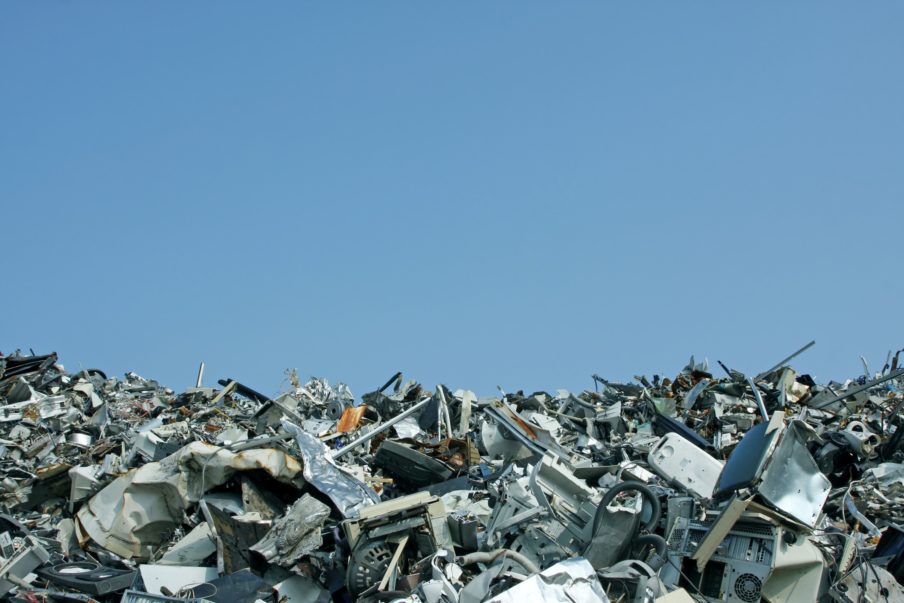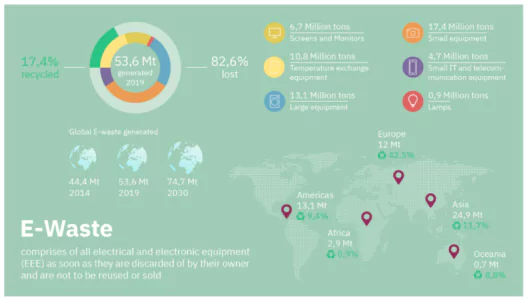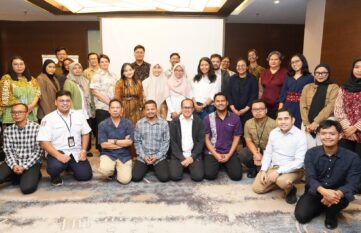E-waste comprises all electrical and electronic equipment (EEE) as soon as they are discarded by their owner and are not to be reused or sold. These include a wide range of everyday items, such as mobile phones, computers, refrigerators or lightbulbs. The amount of e-waste has, in the past few years, been rising significantly and is expected to grow up to 21% in the upcoming 5 years (according to the global e-waste monitor from 2020). This rise of e-waste can be attributed mainly to the short lifecycles of electronic equipment, the vast technological progress that makes older technology obsolete as well as the low recycling rate.
Why is E-waste a concern?
If not recycled e-waste can heavily burden the environment. However, if not even disposed correctly, e-waste poses an additional threat as it contains hazardous and poisonous materials and chemicals. These materials are responsible for polluting waters and can cause serious health problems. In 2019, only 17,4% of global e-waste was collected and properly processed. The rest remained undocumented and most probably disposed of in a non-environmentally friendly manner. Not only does this mean pollution, it also means that a large number of raw materials is wasted.
E-waste Export to Countries of the Global South
Why is e-waste not being recycled? Most e-waste is produced by the countries of the Global North, but also by emerging economies such as China and India. In fact, Asia is the largest contributor of e-waste, followed by the Americas and Europe, while Africa is the least contributor.
As recycling technologies are expensive, many countries export their e-waste to countries of the Global South. As opposed to countries of the Global North, they often do not have stringent e-waste management regulations. In addition, their waste management systems cannot support e-waste recycling. Thus, it is often recycled by inadequate methods posing threats to workers and releasing heavy metals that strain the environment.
E-waste Management Initiatives
E-waste management is thus essential, not only in the countries producing most e-waste, but especially in the recipient countries, which are not only dealing with foreign e-waste, but also, increasingly, with their own. Different initiatives support these countries in setting up recycling facilities.
BMZ is working closely with Ghana, for example, one of the largest importers of e-waste, in order to produce a sustainable system for the e-waste management in the country. The project aids the government in implementing standards or in advising on how to include the largest informal recycling system and waste site into the formal system and transform it into a sustainable waste site.
As the consumption of electrical and electronic equipment increases worldwide, it would be difficult to completely avoid or reduce the production of electrical and electronic waste. Since the recycling process is quite costly and new technologies are constantly needed, one way to reduce e-waste is to produce more durable and environmentally friendly devices.
An example for this is Fairphone. Fairphone is a company producing 100% recyclable phones and phone accessories and integrates recycled materials into their products. Additionally, damaged parts of the Fairphone can be easily replaced.




